About 40-80% of people complain of back pain in the lumbar region, but no more than 25% seek medical help. In fact, such unpleasant sensations can be caused by both relatively harmless causes as well as pathological changes in the spine. Therefore, you should not treat them with disgust.
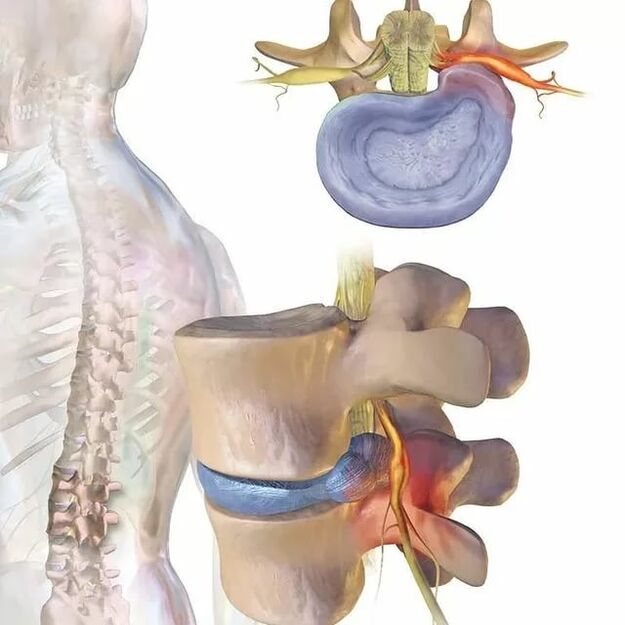
Causes of back pain
The spine consists of a whole complex of structural elements: bones, joints, intervertebral discs, ligaments, nerves. Changes in any of them can be accompanied by painful sensations and of a different nature. In addition, the spinal column is surrounded by paravertebral muscles, a pain during which patients often confuse back pain. Thus, the causes of pain can be many. This can be extra work, natural restructuring of the body during pregnancy, and so on. Sh. But if the pain occurs regularly, it is worth contacting a vertebrologist or neurologist, because often the fact that the spine systematically hurts in the lumbar region, indicates the development of certain diseases. .
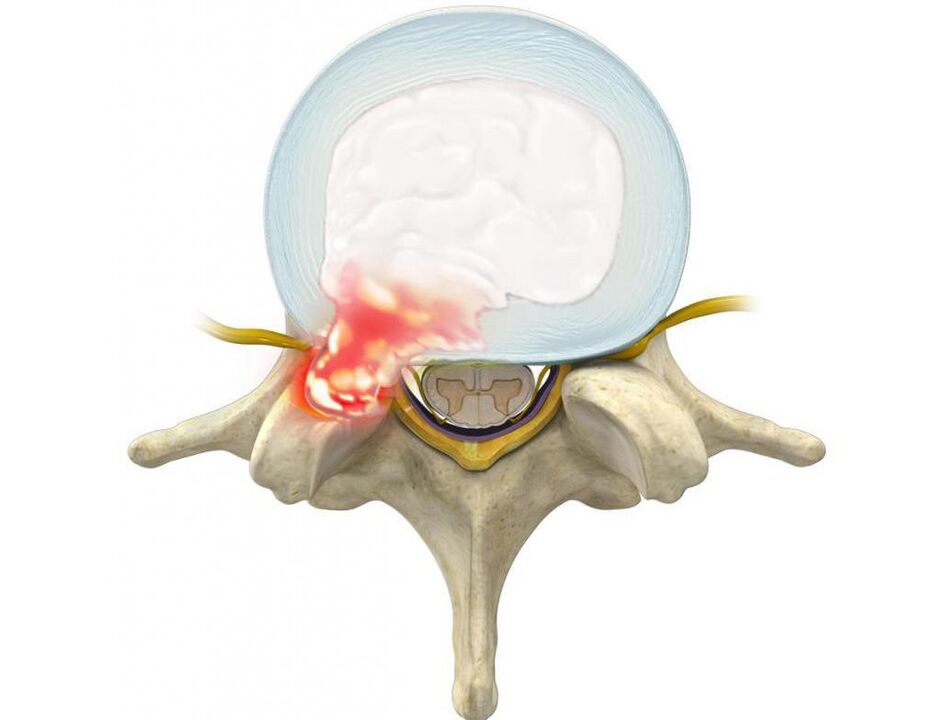
Most often, in such situations, patients are diagnosed with:
- Pathology of the intervertebral discs (decreased disc height, protrusion, intervertebral hernia, dysthymia);
- Joint pathologies (spondyloarthritis, joint cyst);
- Inflammatory diseases (ankylosing spondylitis or ankylosing spondylitis, reactive arthritis, psoriatic arthritis)
- Compression fractures of the spine on the background of osteoporosis;
- Neoplastic lesions of the spine.
Intervertebral disc pathologies
Degenerative changes in the intervertebral discs or osteochondrosis are very common, especially in young and middle-aged people. This is largely due to prolonged sitting or strenuous physical labor. In old age the disc dries and the vertebrae grow together.
In the early stages of the onset of degenerative changes in the spinal discs, which separate the cartilage bodies of the cartilage into special configurations, pain in the spine may occur. This is caused by irritation of the pain receptors in the outer layers of the disc, as well as the posterior longitudinal ligaments of the spine. Often osteochondrosis provokes an aseptic inflammatory process, leading to reflex spasm of segmental muscles. As a result, spine pain increases and there are also restrictions on mobility.
Osteochondrosis is constantly progressing, especially in the absence of proper treatment and lifestyle adjustments. Subsequently, this leads to the formation of protrusions, and later to the formation of intervertebral hernias, which leads to exacerbation of existing symptoms and the emergence of new ones.
It is most often injured in the lumbar region, because it carries the greatest load in daily activities.
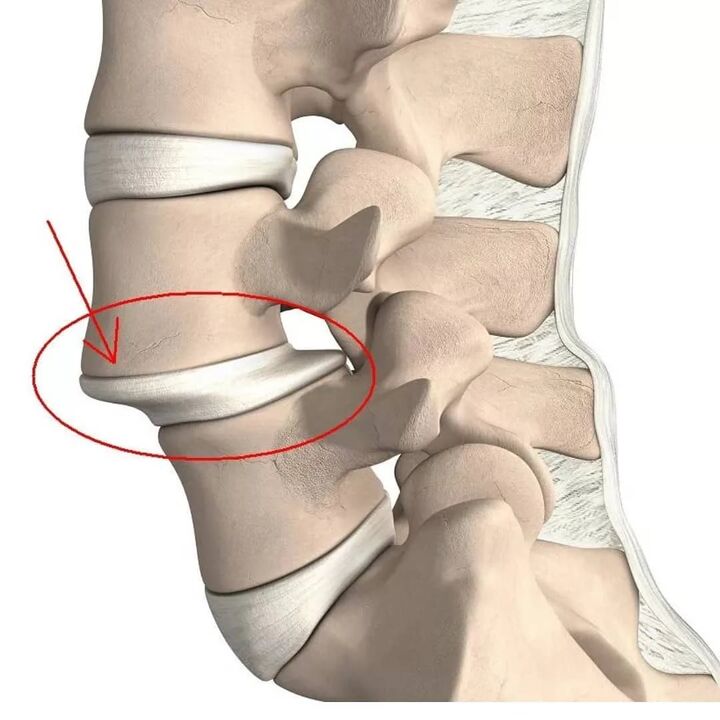
Protrusion is the protrusion of the disc while maintaining the integrity of its outer membrane, called the annulus fibrosus. By maintaining the influence of provoking factors over time, the fibers of the annulus fibrosus do not withstand the load and pressure of the inner contents of the disc (nucleus pulposus) and rupture. As a result, the nucleus goes beyond the physiological state of the intervertebral disc. At the same time, the spine in the lumbar region is always aching or radiating pain to the leg and the discomfort increases with sudden movements, bending, lifting heavy objects, tension, coughing, wheezing, laughing, as well as prolonged sitting. One position, walk, stand.
Often, patients with already formed growths and hernias subconsciously take a forced posture, leaning slightly toward the healthy side. In this case, the back pain in the lumbar region can reach a high intensity, which deprives a person of the ability to work. In such cases, he is forced to follow a bed rest, and to relieve the pain, he stretches his bent leg and brings it to his abdomen.
Most often the rash and hernia appear in the direction of the spinal canal, through which passes the spinal cord (cauda equina) and the nerve roots branching from it. The latter passes through the natural openings of the vertebral bodies and further branches into the lumbar plexus, which is responsible for innervating the lower extremities and various organs (including the genitals).
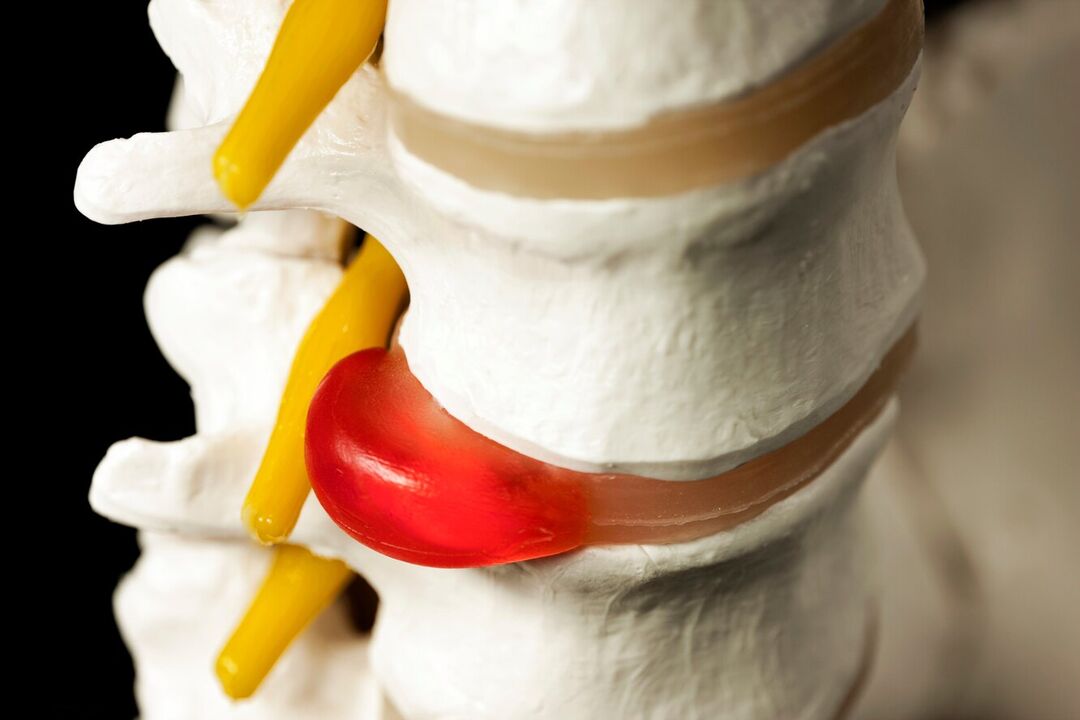
Therefore, often during prolonged osteochondrosis, with the formation of hernias in the lumbar region, the back pain gradually not only intensifies, but also adds to other disorders. If the deformed disc or swollen soft tissues as a result of the inflammatory process compress the root of the spinal cord near them, neurological disorders occur. Thus, back pain in the lumbar region may be added to the buttocks, groin, anterior, inner, outer thigh, lower leg, and foot. It depends on what kind of nerve root will be damaged, i. e. at what level abnormal changes in the spinal movement segment are observed. Also, sensitivity disorders in the corresponding areas of the lower extremities may be observed in the form of climbing, numbness, changes in temperature tendency, pain, tactile stimuli, and restriction of movement.
Changes in the height and function of the discs formed during osteochondrosis and its complications lead to damage to the articular apparatus of the spine, as well as the degeneration of the vertebral bodies themselves. This results in the development of spondylosis, ie calcification of the anterior longitudinal ligament and the formation of bone-cartilage formations on the surface of the vertebral bodies (osteophytes). They can not only damage the surrounding tissue and compress the roots of the spine, cause severe pain in the spine, but also grow together. As a result, the bodies of the surrounding spine are united into one whole, which drastically restricts movement in the lower part of the spine.
Osteochondrosis may be accompanied by reactive changes in the vertebral bodies, in particular reactive aseptic spondylitis, leading to osteosclerosis. This is accompanied by compression of the bone tissue and dramatically increases the likelihood of a vertebral fracture.
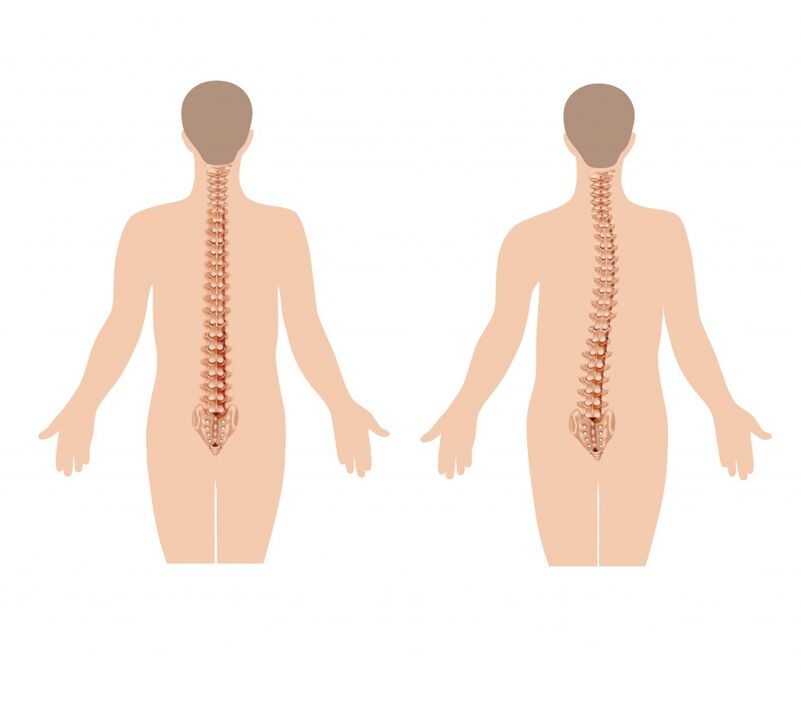
Diseases of the joints
Pathologies of the lumbar spine or phase joints, particularly their arthrosis, can also cause pain in the lumbar region, including severe pain. However more often the pain hurts and is localized deep inside. Their appearance is due to the fact that their synovial capsule is abundantly innervated. In such situations the pain is usually concentrated directly in the injured area and tends to intensify with bending, extension, rotation of the body, prolonged standing. Walking and sitting helps to reduce their severity. But in some cases, pain can be attributed to the groin area, the pelvis, as well as the back and outer thighs.
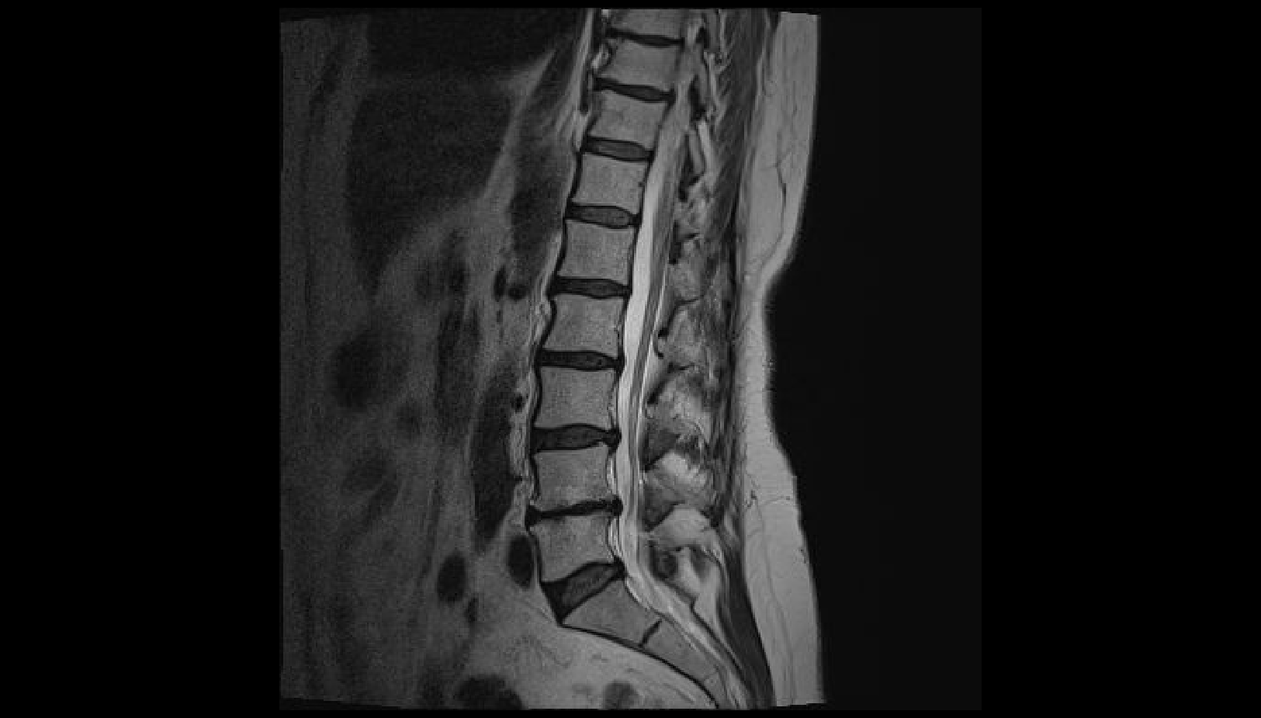
Inflammatory diseases of the spine
Inflammatory diseases of the spine are less common than pathologies of the intervertebral discs and phase joints. However, they also damage the spine. ენიYour include:
- Ankylosing spondylitis or ankylosing spondylitis;
- Reactive arthritis;
- Psoriatic arthritis and a. Sh.
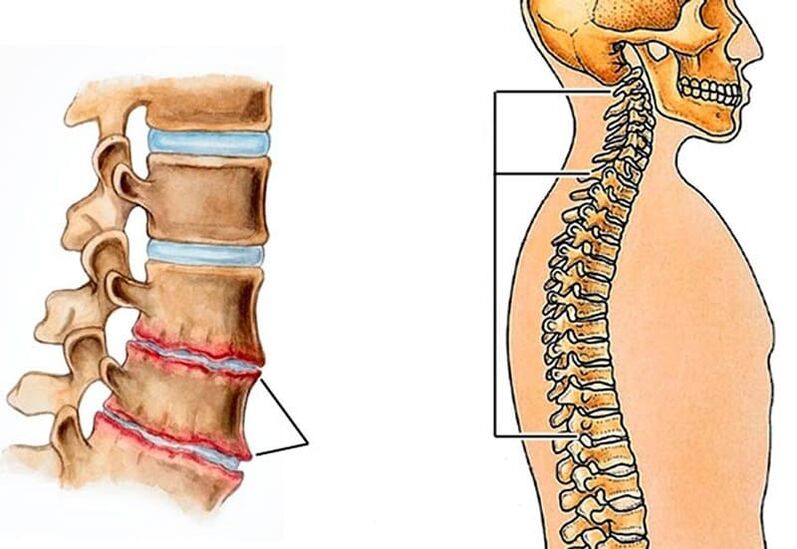
Symptoms of these diseases usually appear before the age of 40, and more often at the age of 20 years. This distinguishes them from degenerative-dystrophic pathologies of the spinal discs and joints, which often develop after 40 years. In this case the pain is characterized by a gradual increase in intensity. Moreover, their severity decreases after physical activity, but does not decrease during rest. Therefore, in inflammatory diseases, the spine in the lumbar region often hurts at night and especially strongly in the morning, at bedtime.
The most difficult condition is observed during ankylosing spondylitis and it is the one with other inflammatory diseases that most often affects the lumbar region. This term refers to inflammation of the intervertebral joints by their subsequent immobilization due to the formation of dense bone, cartilage, or fibrous fusion between bone structures.
At first it is characterized by mild back pain, but over time they gradually spread higher and cover the chest and then the cervical spine. This is associated with the development of limited mobility of the spine in all planes, since the spine, as a result of the changes that occur, seems to be immersed in a particular case. Also observed:
- Correction of lumbar lordosis (natural curvature of the spine in the lumbar region);
- Exacerbation of thoracic kyphosis causing provocation of inclination;
- Reflex tension of the spinal muscles;
- Progressive aggravation of mobility restriction due to involvement of phase joints in the pathological process and ossification of intervertebral discs;
- Morning firmness for an hour or more.
Inflammation of the iris (iritis), cornea (keratitis), mucous membrane (conjunctivitis), iris and ciliary body (iridocyclitis) is observed in 10-50% of patients.
Progression of ankylosing spondylitis leads to the fact that an increasing number of joints in the pathological process. As a result, patients are forced to receive e. წ. This means pronounced kyphosis of the thoracic spine, with the upper body tilted down, bending the knees with a sharp restriction of range of motion in the chest area, which affects the depth of breathing.
The speed of disease progression depends on the adequacy and completeness of the treatment.
Compression fracture of the spine
A compression fracture is a flattening of the body of the spine, resulting in it becoming wedge-shaped. This leads to disruption of the anatomy of the spine, can provoke trauma to the spinal cord and its roots, and also become a factor in the rapid progression of degenerative-dystrophic changes.
Lumbar vertebrae 1 and 2 are more susceptible to injury because they receive the greatest axial load.
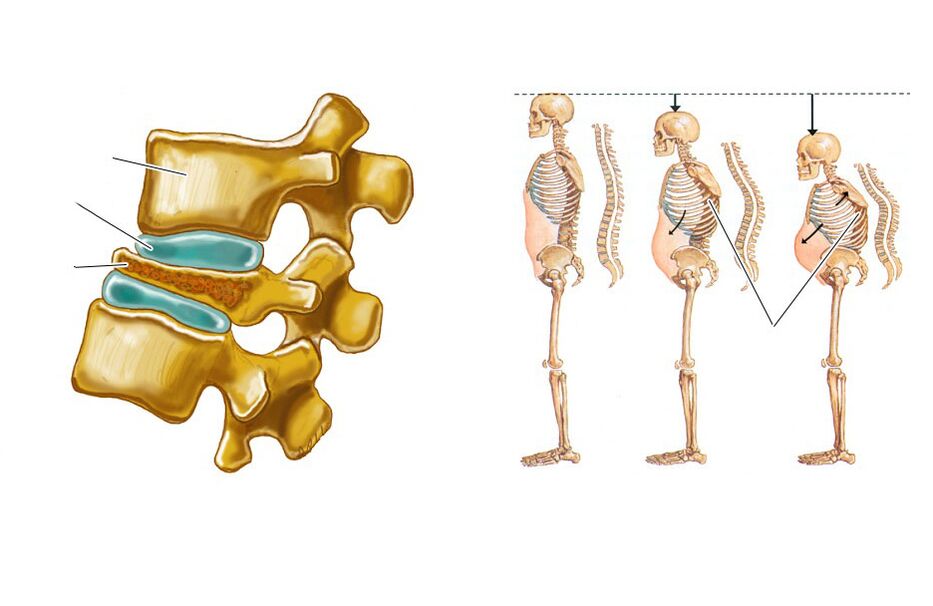
Compression fractures of the spine often occur with the development of osteoporosis in the elderly, i. e. , a decrease in bone density. In such cases, not only a slight fall, but also a rise in gravity, a failed movement may be enough to get an injury.
The pathology is characterized by pain in the spine, which restricts movement, increases with sitting, moving, and attempts to lift the right leg. It usually lasts 1-2 weeks and then gradually decreases over 2-3 months. In some cases, there is pain in the hip bones and hip area. Decreased height of the broken spine leads to an increase in lumbar lordosis, which also contributes to the appearance of painful sensations.
If the fracture is not detected in time, a decrease in the height of the spine causes a change in posture, a decrease in growth. This causes reflex tension and contraction of the spinal muscles, which causes chronic back pain and requires prolonged rest.
Tumor lesions of the spine
Tumor lesions of the spine mean the formation of benign and malignant tumors in it, as well as metastases, the source of which are neoplasms of other organs. It is much rarer than pathologies of the intervertebral discs, articular joints, ankylosing spondylitis, and compression fractures, particularly in only 1-2% of patients with back pain. But such injuries require early diagnosis and treatment.
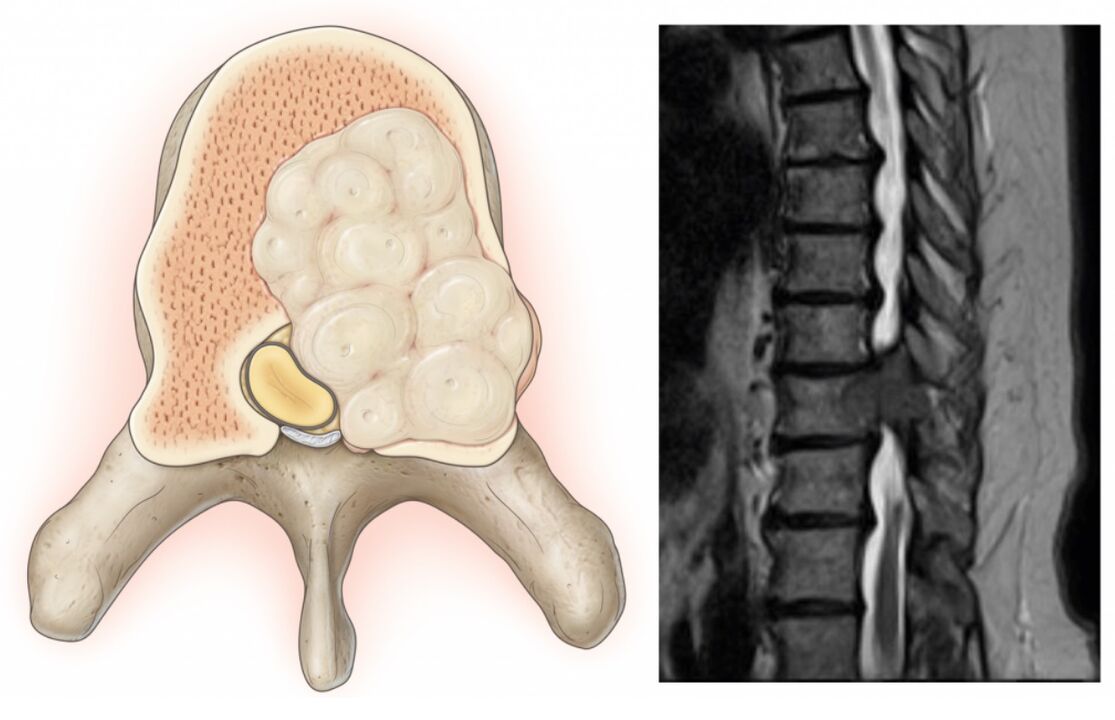
Typical signs of cancerous lesions of the spine, in addition to pain, are:
- Increase in body temperature, including subfebrile values;
- Unreasonable weight loss;
- Inability to find a comfortable position for the body;
- The presence of pain at night;
- Severe pain in the spine;
- Inability to relieve pain with conventional analgesics.
Even if you have 1 or 2 of these symptoms, you should make an appointment with your doctor immediately.
Similarly, the following may appear:
- Chondroma is a malignant tumor that is diagnosed in 20% of patients with spinal cancer lesions. Most often it forms in the sacral cavity and can occur in people of any age and gender.
- Young's sarcoma - occurs in 8% of patients with spinal cancer. It is more common in young people.
- Chondrosarcoma is a malignant tumor that accounts for 7-12% of cases. It is more common in middle-aged men.
- An aneurysmal bone cyst is a benign tumor.
- A hemangioma is a benign vascular tumor found in 11% of people. It may not be detected throughout a person’s life. But this increases the risk of spinal fractures.
- Metastases of other tumors are secondary malignant neoplasms. More often breast, prostate, lung and less often kidney, thyroid and skin cancers metastasize to the spine.
Diagnosis
If your spine hurts in the lumbar region, it is worth a visit to a neurologist or vertebrologist. During the meeting, the doctor first collects the anamnesis, asks questions about the nature of the pain, the circumstances of its origin, the duration of its maintenance, the presence of other symptoms, lifestyle, etc. Sh.
The specialist then conducts an examination. Within it, he not only palpates the spine, determines the localization of pain, assesses the gait and posture that the patient subconsciously takes, but also conducts functional tests. With their help you can detect signs of ankylosing spondylitis, neurological deficits, assess the degree of mobility of the spine and get other diagnostic data.
Based on this, the doctor can already guess the possible causes of the pain syndrome. In order to find out, as well as to accurately determine the degree of damage, instrumental and sometimes laboratory diagnostic methods are additionally prescribed. Most often they seek help:
- Radiography in frontal and lateral projection, sometimes with functional radiological tests;
- CT - allows better visualization of bone structures, therefore, is more often used for spondylosis, fractures, bone tumors, etc. Sh.
- MRI - makes it possible to assess the condition of cartilage structures and soft tissues as scrupulously as possible, so it is often used to diagnose osteochondrosis, protrusions, interstitial hernias, spinal cord injuries;
- Electromyography - indicated for neurological disorders of unknown origin, as well as to assess the degree of nerve damage;
- Radioisotope bone scintigraphy - used to diagnose malignant tumors and metastases;
- X-ray densitometry is the best method for diagnosing osteoporosis;
- Myelography - Used to detect signs of spinal cord compression and cauda equina nerves.
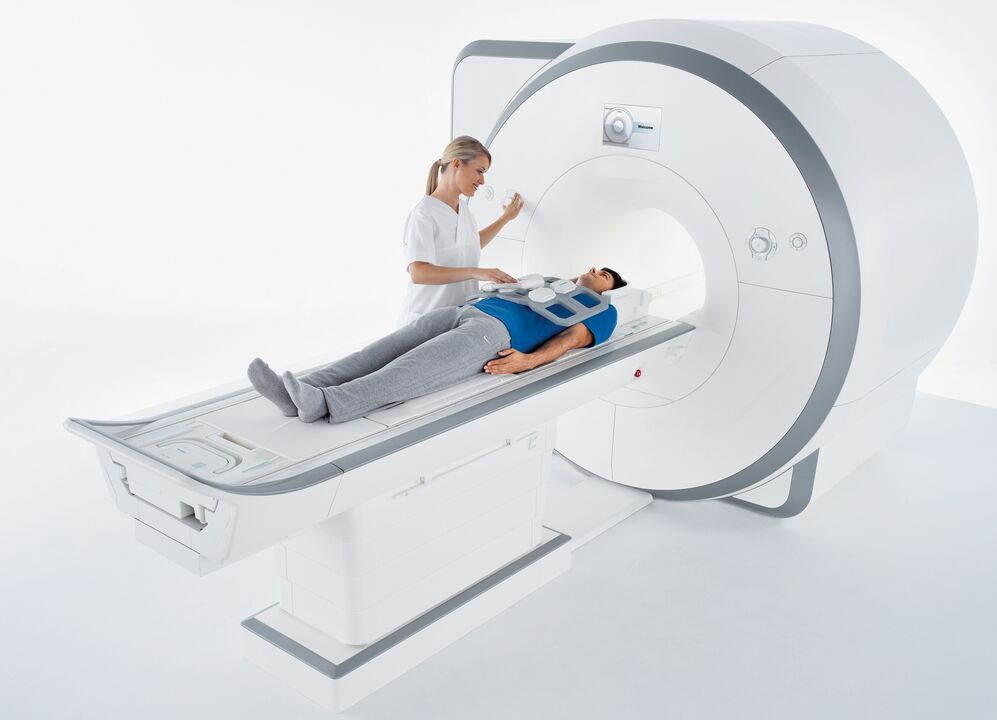
Treatment
Treatment for each patient is selected strictly individually and not only according to the diagnosis, but also according to the nature of the existing concomitant pathologies. Nevertheless, it is the cause of back pain that determines the therapy tactics. This may be conservative or may involve surgery.
But the first step is always to make an effort to alleviate the pain, especially if it is strong. For this, patients are prescribed nonsteroidal anti-inflammatory drugs, antispasmodics, analgesics. In severe cases, the spine is blocked - anesthetics and corticosteroids are injected into specific points on the spine.
Bed rest is not shown for all patients. And with pathologies of the intervertebral discs, may be completely contraindicated, as a decrease in physical activity contributes to the chronic onset of acute back pain.
Exclusively conservative or non-surgical treatment is prescribed:
- Osteochondrosis;
- Ankylosing spondylitis;
- Osteoarthritis of the joints;
- Mild compression fractures.
It is usually complex and consists of:
- Drug therapy, which may include nonsteroidal anti-inflammatory drugs, chondroprotectors, muscle relaxants, immunosuppressants, corticosteroids,
- Physiotherapy (UHF, magnetotherapy, laser therapy, traction therapy, etc. );
- Exercise therapy;
- Manual therapy.

If the cause of back pain is intervertebral hernia, rash, spondylosis, severe fractures of the spine, tumors, surgery is often indicated. Also required:
- Ineffectiveness of conservative therapy of degenerative-dystrophic changes;
- Increase in neurological deficits;
- Instability of the spinal movement segment;
- Development of complications, in particular, spinal canal stenosis.
Most modern spine surgeries are minimally invasive. This dramatically reduces intraoperative and postoperative risks, reduces and facilitates the rehabilitation period, and the efficiency does not fall short of more traumatic open surgeries. Depending on the disease identified, it may be recommended:
- Discectomy is an operation that is mainly indicated for hernias and rashes, especially to provoke ponytail syndrome. It can be performed using microsurgical instruments through a 3 cm incision (microdisectomy) and endoscopic equipment supplied to the spine through a puncture puncture approximately 1 cm in diameter (endoscopic discectomy). When the intervertebral disc is completely removed, it is usually replaced with implants.
- Vertebroplasty and kyphoplasty - shown in compression fractures of vertebrates, hemangiomas and some other diseases. The essence of the operation lies in the fact that the rapidly hardened bone cement is inserted into the body of the spine through a thin canal, which strengthens it. With kyphoplasty it is additionally possible to restore the normal size of the vertebral body, which is important in the event of a serious decrease in their height as a result of a fracture.
- Fixation surgeries are used to stabilize the spinal column. Metal constructions of various natures are used for this, which usually remain in the patient's body for the rest of his life.
Thus, the spine can be injured in the lumbar region for various reasons. Therefore, in addition to the prolongation of painful sensations, their regular occurrence, increase in pain over time and even more other symptoms, it is necessary to consult a vertebrologist or neurologist. Early diagnosis will make it possible to detect abnormal changes in the stages when it is easiest to deal with them, and if the disease is not fully cured, then at least stop its progression and maintain a high standard of living.














































